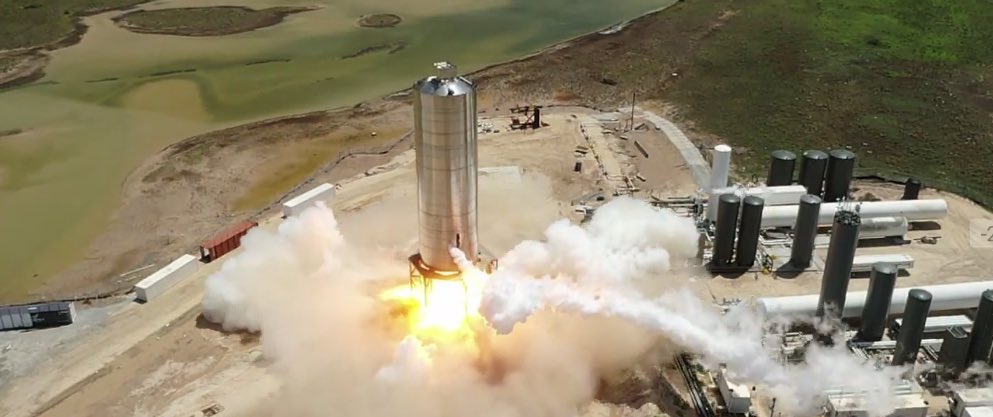With a first successful hop test under their belts using a full-scale prototype, SpaceX is pressing ahead with the testing of the Starship. Tomorrow (on Sunday, August 30th), SpaceX will be attempting to make a second 150 meter (500 ft) hop test, this time with their sixth Starship prototype (SN6). It’s all part of a very busy weekend for SpaceX, with no less than three launches planned.
The previous-hop test took place on August 4th and saw the SN5 successfully fly from the company’s launch pad outside of Boca Chica, Texas. Much like its predecessor, the Starhopper test vehicle, the test consisted of the prototype’s hull using a single Raptor engine to hover 150 m above the launch pad, move laterally, and then land safely on an adjacent pad.
SpaceX’s busy schedule was noted by NASA SpaceFlight reporter Michael Baylor, who shared the details about it via Twitter on Friday (Aug. 28th). In addition to the SN6 hop test, SpaceX also plans to launch another batch of its Starlink satellites (V1 L11) from Launch Complex 39A at Cape Canaveral, Florida; and Argentina’s SAOCOM 1B Earth observation satellite, which will launch from Space Launch Complex 40 at Cape Canaveral.
Musk replied to the comment, indicating that with such a packed schedule, something was likely to be scrubbed. This would presumably be due to weather, which is forecasted to be rather iffy around Cape Canaveral tomorrow. Aside from westerly winds of 18 km/h (11 mph) from morning to midday, there is also a risk of thunderstorms and a 40% chance it will rain around the cape.
In any case, the SN6 appears to be good to go for tomorrow, as indicated by a public notice from Cameron County that road closures will be in effect around the Boca Chica site for up to three days. The notice specifies Sunday (Aug. 30th) as the primary date – from 08:00 am to 08:00 pm local time (07:00 am – 07:00 pm EDT; 06:00 am – 06:00 pm PDT) – with backup opportunities for Monday and Tuesday from 08:00 am to 08:00 pm.
Meanwhile, the company is busy preparing the next full-scale models for testing. This includes the assembly of the SN7 and SN8 prototypes, which are likely to be making their own short hop tests in the near future. This is in keeping with what Musk tweeted shortly after the SN5 hop test, which was that the company would be performing: “several short hops to smooth out launch process, then go high altitude with body flaps”
The high altitude flights he was referring to are the 20 km (~12.5 mi) hop test, which will be the curtain-raiser for orbital test flights. As Musk noted, the Starship’s body flaps, which allow the spacecraft to maneuver during high-altitude flights (not to mention re-entry), will be a key part of that. For this test, three Raptor engines will be integrated and used in the prototype as well.
The last three iterations of the Starship prototype (SN4, SN5, SN6) have also included the new telescoping landing legs that flip out from beneath the fuselage. After the last test, Musk explained that the SN5’s landing legs got a little beat up and were in need of repair, and that the SN6 might be making the three-engine 20 km flight sooner than its predecessor.
When all of that is said and done, the final design of the Starship will have six Raptor engines, three that are optimized for sea-level thrust, and three optimized for thrust in vacuum. We can also expect test flights involving the Super Heavy first stage to commence in the near future as well, the final version of which will have no less than 31 Raptor engines!
Further Reading: Futurism

